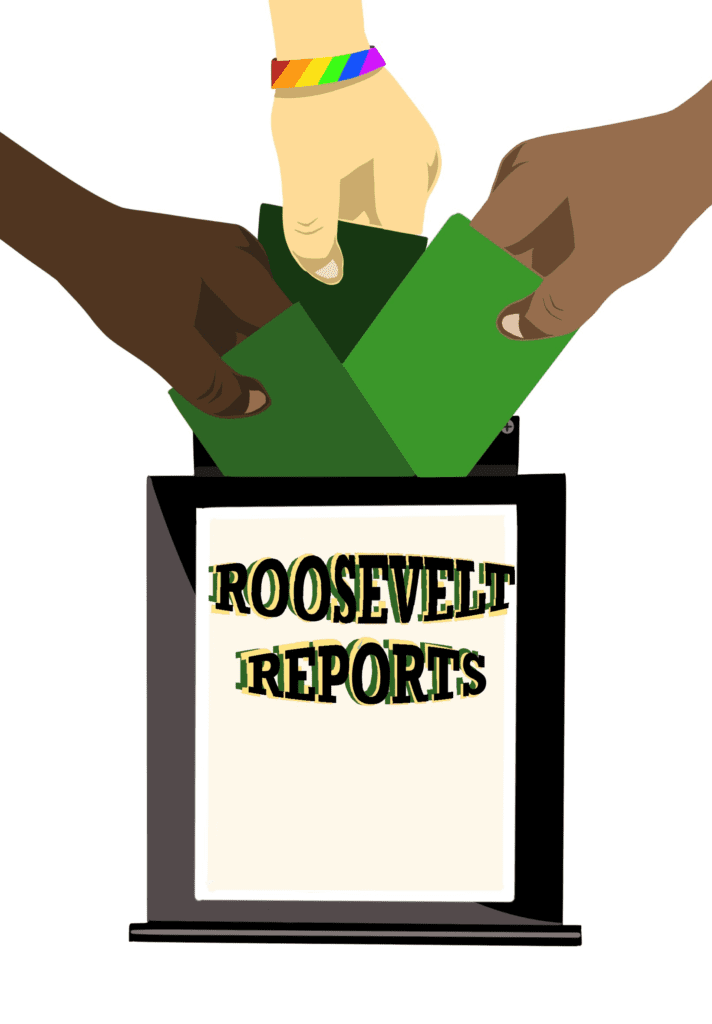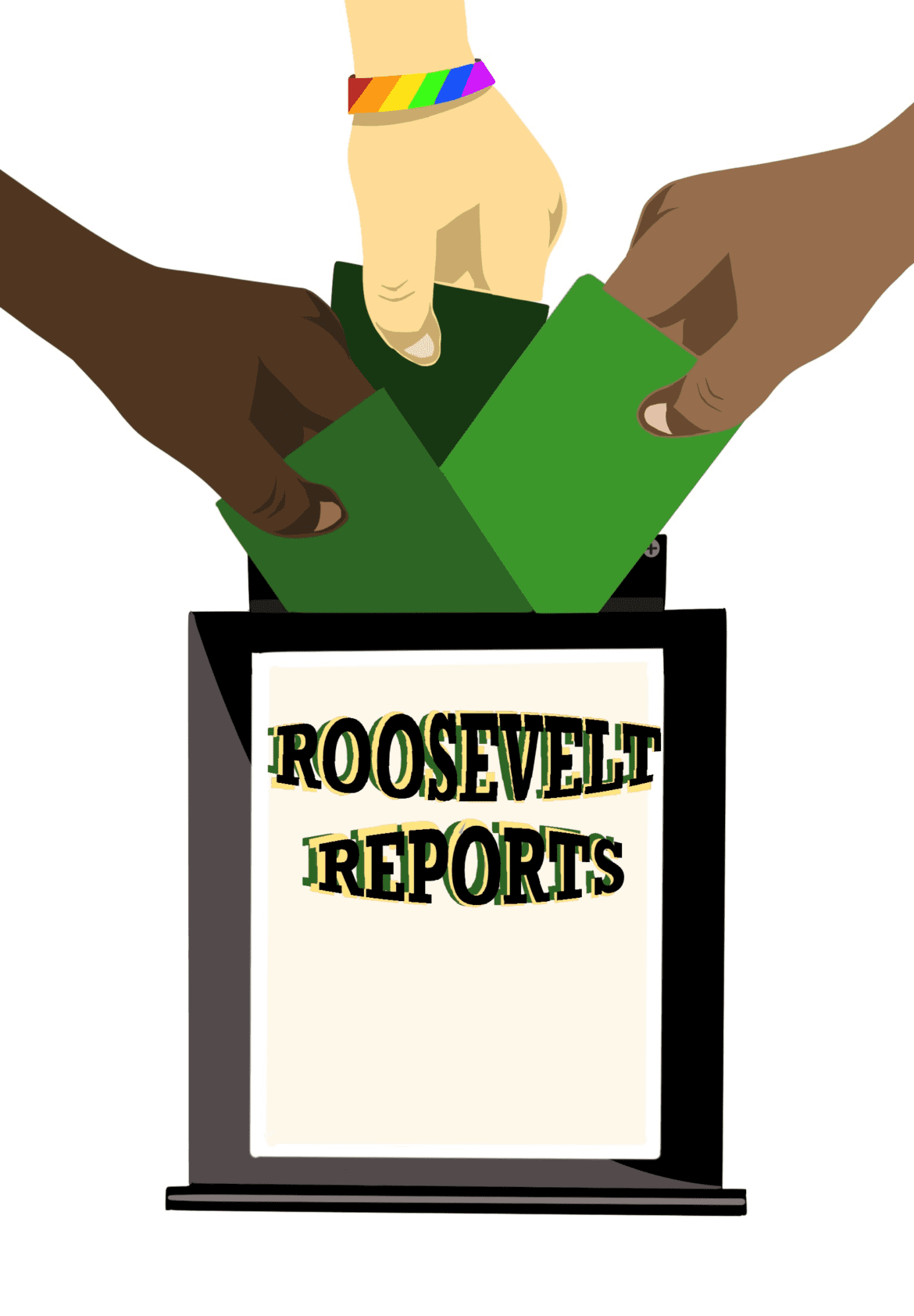
Bullying has plagued all levels of school for decades. According to the 2015-16 Civil Rights Data Collection on School Climate and Safety, a survey of 96,000 schools concluded that one-fourth to one-third of students in the U.S. report experiencing bullying at some point within their school years.
The survey found that 23% of bullying incidents were reported to be due to race, and 16% of incidents were reportedly due to sexual orientation.
During the 2020-21 school year, the LaJuana Johnson Leadership and Development Group (LJLDG) assessed racial equity at Roosevelt and found that 48% of Black, Indigenous, and People of Color (BIPOC) survey respondents report having been treated unfairly by peers based on their race, while 73% of respondents have observed such interactions.
Quincy Purcell, a Roosevelt junior of mixed race, speaks to his experience: “I do feel like in some situations I am excluded from stuff because of the way I look and I wouldn’t fit in with the crowd.” He later adds, “People just don’t really think of me as normal or fitting in with the crowd, so that’s how I would describe it,” referring to his place in Roosevelt’s social environment.
These feelings are not uncommon amongst Roosevelt’s minority-group population. Another Roosevelt student of color, who has requested anonymity for safety reasons, comments on perceptions of her race, “If we’re talking about something in class, people will look at me.” She goes on to add, “I’ve been treated a little differently because of my race, sometimes I think people don’t even realize that what they’re saying is wrong.”
This student refers to the practice of microaggressions. According to Merriam-Webster, a microaggression is a comment or action that subtly and often unconsciously or unintentionally expresses a prejudiced attitude toward a member of a marginalized group.
Many students distrust the reporting process, and are frustrated with the lack of transparency and accountability in the school’s response to complaints of bullying and harassment. In fact, the LJLDG found the majority of students (85%) targeted based on their race did not report the incident. Reasons ranged from a belief in an unresponsive school administration that hasn’t handled past reports well, to fear of retaliation, and lacking information on the reporting process.
This year, the Roosevelt administration is spearheading a new approach to address student frustrations. Under new Principal HkwauaQueJol Hollins, with the help of counselors and the Associated Students of Roosevelt (ASR), a new reporting system is being introduced.
The new system features drop boxes labeled “Roosevelt Reports” around the school in which students can place complaints or requests, by name or anonymously. If used as intended, students would be able to “make reports about what they’ve seen or what they saw, any acts of bullying, then place those reports inside the boxes,” says Hollins.
These boxes are being rolled out slowly, but there is a reason for this. Hollins says, “We want to make sure students understand that this is their boxes and their way of being self-reporters.”
After racist, sexist, or homophobic instances of bullying are reported, school procedures are followed to address the event.
Regarding next steps, Hollins says, “You’ve gotta use the process. You sit down, you take notes, you try to get as much facts as possible, and then you start your investigation. Your investigation includes calling people in, figuring out exactly what’s going on, and exactly what the roles are playing, and then getting together with the other admin staff and figuring out what our next steps are going to be.”
In the past, students shared posts on social media that advocated for expulsion as punishment for offenses such as the use of racial slurs and sexual assault accusations. However, that may not be possible: due to state rules, there are few scenarios which can result in the expulsion of a student.
Hollins says, “OSPI does not like to expel anyone.” OSPI is the Office of the Superintendent of Public Instruction, the governing agency for public schools in Washington State.
“There was a history of minority students getting suspended at a highly alarming rate, there still is. Because of that, they wanted to change the state policy on suspensions, which they have,” continues Hollins.
OSPI has changed their rules around suspension, such as prohibiting long-term suspension for elementary school students, and limiting short-term suspensions to 10 school days. These actions have been taken in response to the equity issues referenced by Hollins.
Regarding teacher responses to reports, students have had varying experiences. When asked how his teachers responded, and if he was satisfied, Purcell says, “I think some teachers don’t really care that much, so I would say it depends on the teacher heavily.”
Hollins reflects upon his view of a better path for change, and says, “I think people are concentrating on the wrong thing. I think they’re concentrating on ‘how do I get my pound of flesh, how does that person get punished’ instead of ‘how do we change the behavior,’ because it’s the behavior we want to change.”
Hollins’ desire for change is beginning to be felt around Roosevelt. Purcell says “I think Mr. Hollins is a step in the right direction,” and, “Certainly I feel more comfortable with Mr. Hollins, he’s a Black principal, I feel like he’s gonna take this more seriously.”
Purcell comments on changing school behavior as a collective effort, and says, “It’s not us and them, we are a school.” Another student comments, “Considering the demographics and where we live, there will always be work to do.”
